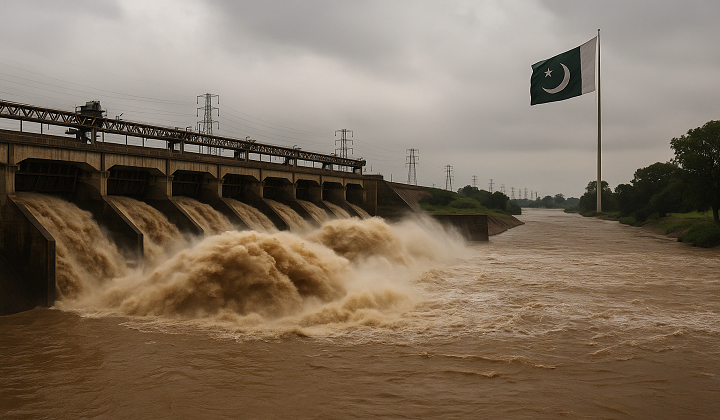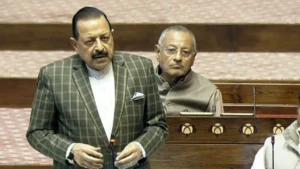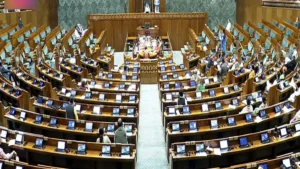In a dramatic shift with potentially far-reaching geopolitical consequences, India suspended the Indus Waters Treaty (IWT) with Pakistan for the first time since its inception in 1960. The move came a day after the terror attack in Pahalgam, Jammu and Kashmir, in which Pakistani terrorists killed 26 tourists, marking one of the deadliest civilian attacks since the Mumbai 26/11 attacks.
This suspension is part of a broader set of diplomatic and security measures taken by New Delhi, including the closure of the Attari-Wagah border, revocation of visa services for Pakistani citizens, and the expulsion of Pakistani military and diplomatic personnel from India.
What is the Indus Waters Treaty?
A Landmark Agreement Signed in 1960
The Indus Waters Treaty was signed in Karachi on September 19, 1960, after nearly nine years of negotiations between India and Pakistan, with the World Bank as a mediator and guarantor. The treaty laid out a comprehensive framework for sharing the waters of the Indus river system, which includes six major rivers: Indus, Jhelum, Chenab, Ravi, Beas, and Sutlej.
Division of Rivers
-
Eastern Rivers: Sutlej, Beas, Ravi – Allocated to India for unrestricted use.
-
Western Rivers: Indus, Jhelum, Chenab – Allocated to Pakistan, with India permitted to use them for non-consumptive purposes, such as hydropower, irrigation, and navigation, under strict guidelines.
The Treaty contains 12 Articles and 8 Annexures (A to H), covering usage rights, technical specifications, and dispute resolution procedures.
Why is India’s Suspension Significant Now?
The suspension of the IWT allows India more strategic flexibility in how it manages the Indus basin’s water resources. While this action does not immediately stop the flow of water into Pakistan, it enables India to limit access and oversight by Pakistani officials on Indian hydroelectric projects, particularly:
-
Kishenganga Hydroelectric Project (HEP) on the Kishenganga River (tributary of Jhelum)
-
Ratle Hydroelectric Project on the Chenab River
Experts note that although India does not currently have the infrastructure to halt or divert river flows entirely, the move signals a long-term shift in intent and water policy.
Legal and Diplomatic Complexity
No Exit Clause in the Treaty
One of the most debated aspects of the IWT is that it contains no unilateral exit clause. According to the Treaty:
- It has no expiration date
- Any modification must be made through a mutually agreed-upon, ratified agreement between India and Pakistan
Despite the lack of a formal withdrawal mechanism, India has invoked Article XII (3) of the Treaty in the past, which allows for modification by a new agreement.
Dispute Resolution Mechanism
The IWT has a multi-tiered dispute resolution mechanism under Article IX, which includes:
- Bilateral dialogue via the Permanent Indus Commission
- Referral to a Neutral Expert
- Arbitration by a court of arbitrators in case of unresolved disputes
Pakistan may attempt to trigger this mechanism following the suspension, but legal experts suggest that arbitration may not be enforceable if India refuses to cooperate.
Ongoing Disputes Over Hydroelectric Projects
The two hydroelectric projects in Jammu and Kashmir — Kishenganga and Ratle — have long been a point of contention between India and Pakistan.
- Pakistan argues that their design features violate the Treaty.
- India asserts they are run-of-the-river projects that do not obstruct the flow and are compliant with IWT rules.
In January 2023, India issued its first-ever notice seeking modification of the Treaty, citing Pakistan’s delays in the resolution process. A second notice followed in September 2024, formally requesting a review and renegotiation.
Role of the Neutral Expert
In 2022, the World Bank appointed Michel Lino as the Neutral Expert to resolve technical disputes. After holding three rounds of discussions:
- Pakistan claimed the issues raised did not fall within the Neutral Expert’s mandate, as outlined in Annexure F.
- India maintained that the matters were clearly covered under the Treaty, obligating the Neutral Expert to give a decision.
In January 2025, Lino ruled that he was competent to adjudicate on the matter, a significant step toward a formal verdict on the hydroelectric project designs.
Implications of the Suspension
1. Strategic Leverage for India
Suspending the Treaty gives India greater leverage in water negotiations and reduces its obligation to notify or cooperate with Pakistan on Indus water projects.
2. Water Security Concerns for Pakistan
With over 80% of Pakistan’s agriculture dependent on Indus waters, any disruption could have serious economic and environmental consequences.
3. Regional Stability at Risk
The IWT has long been a symbol of cooperation amid conflict. Its suspension could raise tensions further, especially if Pakistan responds with retaliatory measures or seeks international intervention.



 Prime Minister Releases Commemorative Po...
Prime Minister Releases Commemorative Po...
 Parliament Passes SHANTI Bill, AERB Gets...
Parliament Passes SHANTI Bill, AERB Gets...
 Viksit Bharat G RAM G Bill Passed in Lo...
Viksit Bharat G RAM G Bill Passed in Lo...







